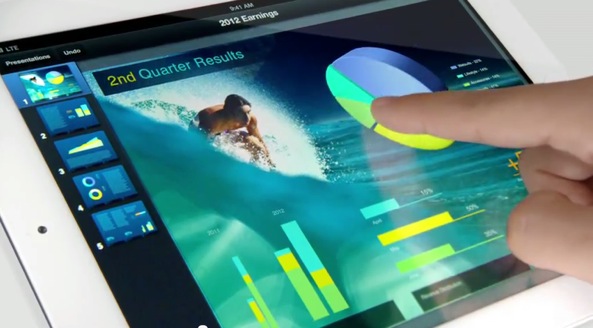The New York Times published a fascinating piece yesterday evening about Microsoft’s Surface tablet which contains a few interesting tidbits about Apple’s iPad and just how far Cupertino had gone to gain an edge on its products…
Author Nick Wingfield relays words by a former Microsoft employee, who explained:
Microsoft learned through industry sources that Apple had bought large quantities of high-quality aluminum from a mine in Australia to create the distinctive cases for the iPad.
And “in a nod to Apple’s work with aluminum”, members of the Surface team began researching various materials before eventually settling on a cool magnesium case that “felt good to testers when held in their hands”.
That’s when the problems began.
Apple’s penchant for new materials and uncanny ability to contract out assembly to a vast supply chain network was impossible to beat and even Microsoft was take aback by Cupertino’s strengths in manufacturing (thank that to Tim Cook):
The executives were stunned by how deeply Apple was willing to reach into the global supply chain to secure innovative materials for the iPad and, once it did, to corner the market on those supplies.
Apparently managers at Microsoft were “worried that Windows PC makers were not making the same kinds of bets”.
The article also goes on to assert that Microsoft’s dissatisfaction with its OEMs willingness to experiment with materials, their impetus and reluctance to go the distance in order to delight with innovative products all contributed Microsoft’s decision to enter OEMs’ turf with a tablet of its own.
Reuters reported earlier that the Surface led to a sense of “betrayal” among the OEMs who’d prefer Redmond to deal with software and leave them to create products around Windows.
When you think of it, innovation is expensive. Microsoft is forcing OEMs to use inexpensive parts and create products that are as cheap as possible.
The problem is, the game is not fair now that Microsoft is doing its own tablet. Computer makers have to pay licensee fees to Microsoft for using Windows 8 on tablets, limiting their ability to compete on price.
There’s also this slight problem with Apple’s famous vertical integration:
With the iPad, Apple has proved that there are significant advantages to designing hardware and software together. When separate companies, each with its own priorities, handle those chores, integrating hardware and software can be more challenging.
I also like this bit about control over its powerful supply network:
Microsoft worked with other hardware partners to devise products that would be competitive with the iPad, but it ran into disagreements over designs and prices.
“Faith had been lost” at Microsoft in its hardware partners, including by Steven Sinofsky, the powerful president of Microsoft’s Windows division, according to the former Microsoft executive.
The article goes on to mention the politics and power play between Hewlett-Packard and Microsoft that led to a premature demise of HP’s tablet before it even took off, HP’s expensive gamble with webOS and more.
It’s an interesting and highly recommended read.
My take?
I don’t really see any company matching Apple’s supply chain advantages.
That, coupled with Apple’s vertical integration, is a tough nut to crack and right now, I think only Samsung is able to compete with Apple on a global scale.
What’s your take?
